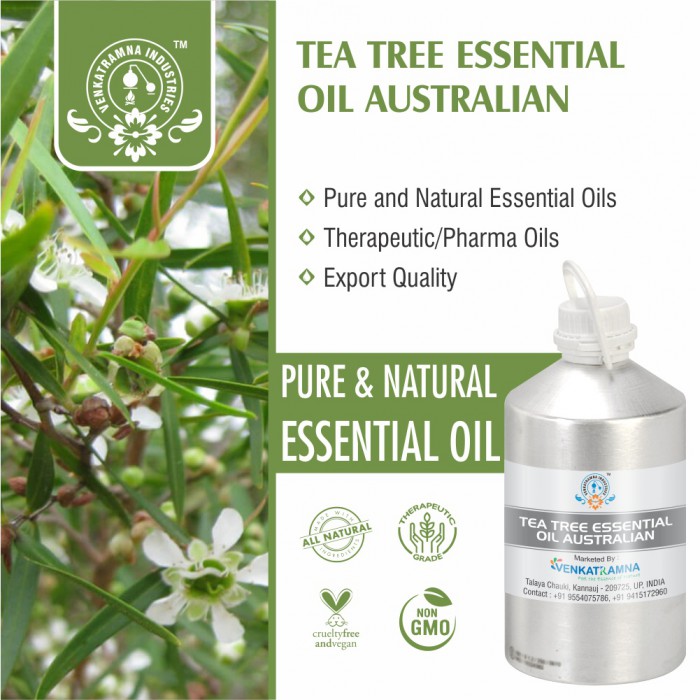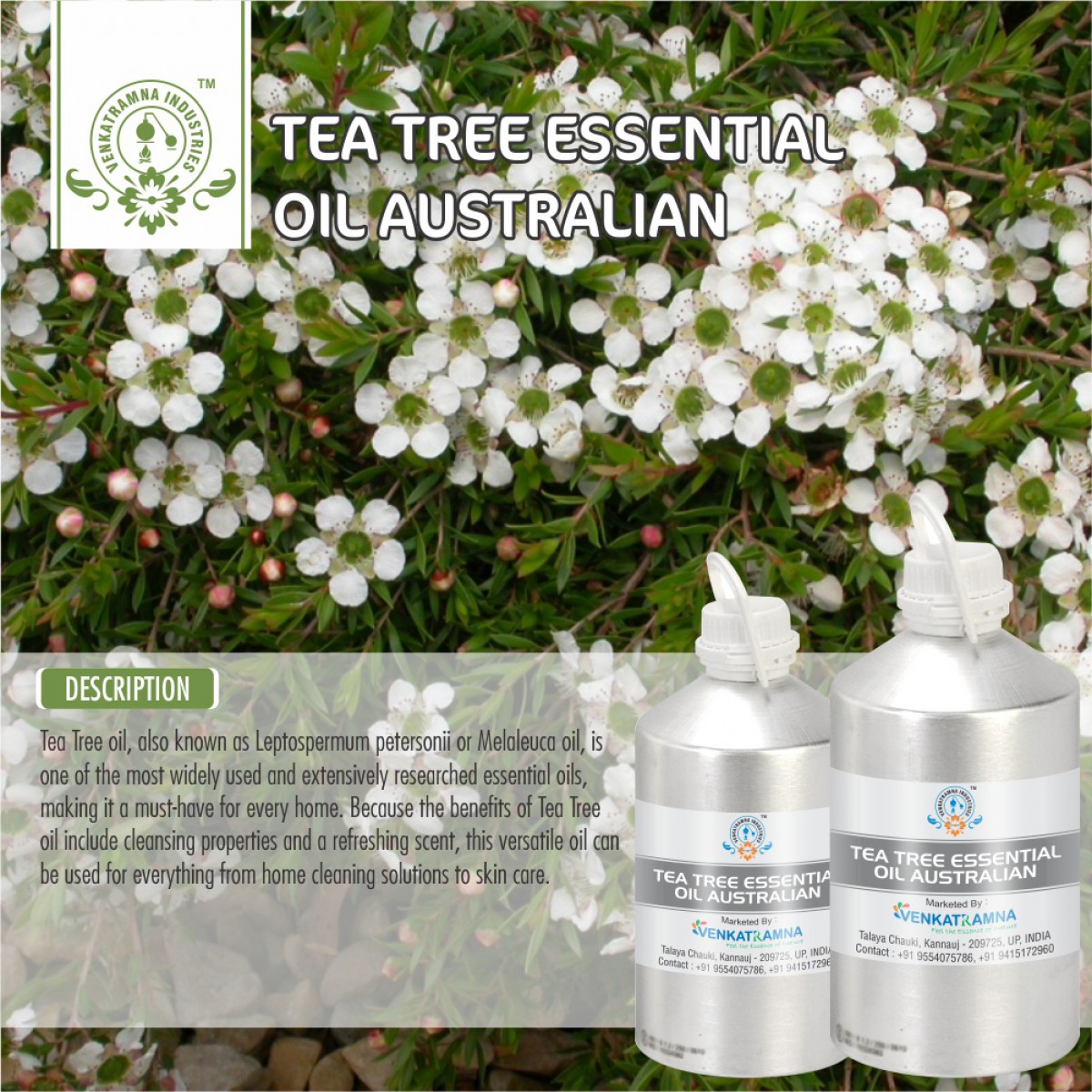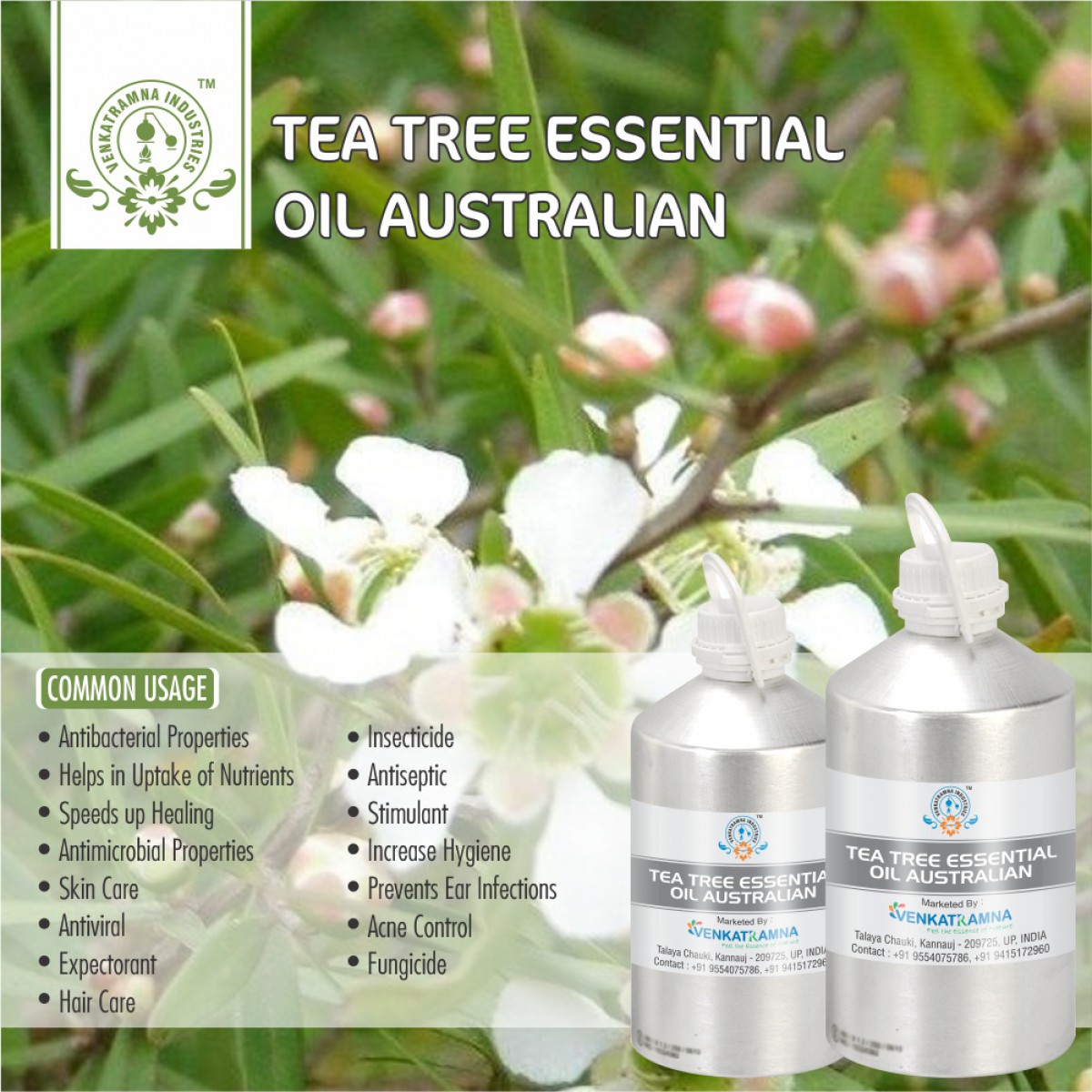Botanical Name: Melaleuca alternifolia Common name: Tea Tree, Pla Read More
|
Botanical Name: |
Melaleuca
alternifolia |
|
Common name: |
Tea Tree, |
|
Plant family: |
Myrtaceae |
|
Genus: |
Melaleuca |
|
Appearance/Color: |
A thin, clear, pale yellow liquid. |
|
Odor: |
A middle note with a medium aroma, Tee Tree has a fresh, slightly
medicinal scent with characteristic woody, camphoraceous notes. |
|
Blends With: |
Cinnamon Bark,
Clary Sage, Clove Bud, Geranium, Lavender, Lemon, Nutmeg, Rosewood, Rosemary
and Thyme. |
|
Origin: |
Australia |
|
Source: |
Leaves |
|
Method of Extraction |
Steam Distillation |
The main source of commercially
produced tea tree oil, Melaleuca alternifolia is an efficacious
natural antiseptic once heralded as 'a medicine chest in a bottle'. The
genus Melaleuca belongs to the myrtle family (Myrtaceae) and includes
about 250 species (including the paperbarks, some of which are cultivated as
ornamentals). Most Melaleuca species are restricted to
Australia. M. alternifolia bears fluffy, white masses of flowers from
spring to early summer, and its narrow leaves help distinguish it from the
similar species M. linariifolia, which has wider leaves and
flattish-spherical fruits.
Tea tree is a member of a highly aromatic family, the myrtacea family, including myrtle, bay laurel, and sassafras for a start. These plants produce fragrant oils that both speed skin healing and kill off any bugs trying to cause skin infections. Tea tree is an excellent alternative to antibiotic cream and one that should be used to replace those nasty creams. This member of the fragrant family is native to Australia. It was used by the aborigines to treat wounds, cuts and abrasions long before the white man happened onto those shores. When the convicts made their way to the outback, they quickly learned of the wound antiseptic uses of this native plant. Like many other members of the myrtaceae family. A relatively new oil at the turn of this century, tea tree oil gained popularity during the Second World War. It was used by the British Navy to keep wounds from becoming infected. Beyond this, it was used in ammunition factories in Australia to keep workers hands free from infection following factory accidents. Early in this century doctors learned that when one applied tea tree to a wound, it did not become infected.
DISCLAIMER
The complete range of conditions
or methods of use are beyond our control therefore we do not assume any
responsibility and expressly disclaim any liability for any use of this
product. Information contained herein is believed to be true and accurate however,
all statements or suggestions are made without warranty, expressed or implied,
regarding accuracy of the information, the hazards connected with the use of
the material or the results to be obtained from the use thereof. Compliance
with all applicable federal, state, and local laws and local regulations
remains the responsibility of the user.
The FDA has not evaluated the
statements on this website. No claims are made by Venkatramna Industries as to
the medicinal value of any products from vriaroma.com or by us. The information
presented here is for educating our customers about the traditional uses of
essential oils and is not intended to diagnose, treat, cure, or prevent any
disease. You are responsible for understanding the safe application of these products.
If you have any questions, please call or email us for further information.
As per NAHA guidelines, New Directions Aromatics
(NDA) does not recommend the ingestion of essential oils. It is imperative to
consult a medical practitioner before using Essential Oils for therapeutic
purposes. Pregnant and nursing women and those taking prescription drugs are
especially advised not to use this product without the medical advice of a
physician. The oil should always be stored in an area that is inaccessible to
children, especially those under the age of 7.
Traditionally, the crushed leaves
of Melaleuca alternifolia were used by Australian Aborigines
to treat skin infections. Today, M. alternifolia is
commercially cultivated (especially in north-east New South Wales) for tea tree
oil, an essential oil which is used as an antiseptic in skin care products, in
the perfume industry, and in soaps and mouthwashes. The oil is effective
against bacterial, fungal and viral infections, and is used in products to
treat such conditions as athlete's foot, warts, acne and vaginal infections.
Tea tree oil is also used for treating respiratory problems, such as asthma and
bronchitis.
Tea tree oil was usually used to treat minor cuts, burns, acne, athlete's
foot, mild fungal nail infections, vaginal yeast infections, and lung problems
(when they add the oil to a bath or vaporizer). Although there is little
research on tea tree oil, some studies suggest that it is safe and often
effective for the prevention and treatment of infections. Tea tree oil can kill
bacteria and fungi. It comes from the evergreen leaves of the Melaleuca
alternifolia tree. Tea tree oil has been used as complementary therapy in
surgery, burn care, and dental care. Numerous tea tree oil body care products
are available, including soap, shampoo, toothpaste, lip balm, topical (used on
the skin) cream, and essential oil.
COMMON USAGE
·
Antiseptic, antifungal, antibacterial
·
Stimulates immune system
·
Colds, glandular fever, cystitis, urinary
infections
·
Open blocked noses
·
Chronic and acute infections
·
Gargle for sore throats
·
Douche for thrush and itchy vaginal infections
·
Acne
·
Hair rinse
Ingredients:
|
S.No |
Key Constituents |
Strength (%) |
|
1 |
Terpinen-4-ol |
30.0-48.0 |
|
2 |
g-terpinene |
10.0-28.0 |
|
3 |
1,8-cineole tr |
15.0 |
|
4 |
a-terpinene |
5.0-13.0 |
|
5 |
a-terpineol |
1.5-8.0 |
|
6 |
p-cymeme |
0.5-8.0 |
|
7 |
a-pinene |
1.0-6.0 |
|
8 |
Terpinolene |
1.5-5.0 |
|
9 |
Sabinene tr |
3.5 |
|
10 |
(P)-aromadendrene tr |
3.0 |
|
11 |
d-cadinene tr |
3.0 |
|
12 |
Ledene (viridiflorene) tr |
3.0 |
|
13 |
(P)-limonene |
0.5-1.5 |
|
14 |
Globulol tr |
1.0 |
|
15 |
Viridiflorol tr |
1.0 |
Safety Summary
·
Hazards skin sensitization.
·
Cautions Old or oxidized oils should be
avoided.
·
Maximum dermal use level 15%
Systemic Effects
·
Skin corrosion/irritation: No Additional Data Available.
·
Reproductive toxicity: Not specified
·
STOT-single exposure: Not specified
·
STOT-related exposure: Not specified
·
Interactive effects Not specified
·
Aspiration Hazard: No Data Available
·
Toxic
to aquatic organisms, may cause long term adverse effects in the aquatic
environment.
·
Results of PBT and vPvB assessment
o
PBT: Not applicable.
o
vPvB: Not applicable.
·
Persistence and degradability No further
relevant information available.
·
Bio-accumulative potential No further relevant
information available.
·
Mobility in soil No further relevant information
available.





 MSDS-Teatree.pdf
MSDS-Teatree.pdf




